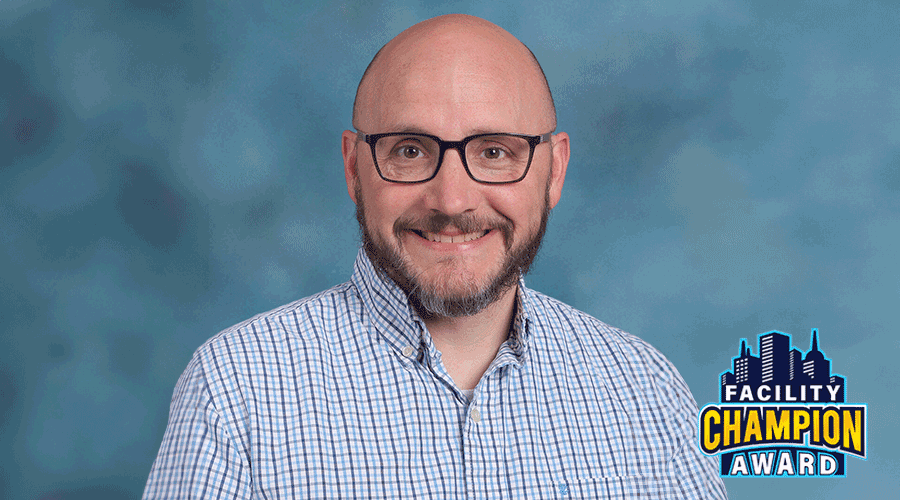
Funding Capital-Intensive Projects Through ESPCs and ESCOs
Some projects require a lot of money to be available to make them happen, and there are options out there to help do so. September 26, 2024
By Jeff Wardon, Jr., Assistant Editor
Let’s face it, facility improvement projects and the like aren’t cheap. They require a large source of capital to get done, and some facilities departments simply don’t have that kind of funding available. Bearing that in mind, certain offerings such as Energy Savings Performance Contracts (ESPCs) and Energy Service Companies (ESCOs) are available for facility managers to use for these capital-intensive projects.
To explore these possibilities, Timothy Unruh, PhD, PE, CEM, executive director at the National Association of Energy Service Companies, will present the session “Evaluating Risk: Funding Building Retrofit and M&O Projects” at NFMT Remix 2024 in Las Vegas from October 29 to 30.
FacilitiesNet: How do ESPCs alleviate the financial burden on facility owners when undertaking capital intensive projects?
Timothy Unruh: An ESPC allows a facility to upgrade itself without requiring new capital. A lot of times in the building space, getting money to update facilities is challenging. So, what happens is many times they resort to letting something fail and then you have an emergency replacement. Emergency replacements tend to cost more because of the last-minute replacement. Then when you buy that equipment to replace it at the last minute, you also don't necessarily buy the most efficient product.
So, an energy savings performance contract allows you to do a planned upgrade of your facilities. It uses the money you're already paying for utility bills, operation maintenance costs and other costs and can use capital costs you might have planned to spend. Combine all that together along with any tax credits, tax breaks or utility rebates to make an overall funding for a project that can update your facility and not require you to bring new money into the project.
FacilitiesNet: From a financial perspective, what are the most significant risks associated with traditional capital improvement projects and facility management? And how does partnering with an ESCO through an ESPC help mitigate these risks?
Unruh: The most significant risk associated with traditional capital is a failure to perform. There's another risk as well and that traditional capital is often a design bid build process, and contractors are very good at finding change orders that creep the cost up.
Over time, when you develop an energy savings performance contract, you partner with an energy service company. Through that partnership, you've codeveloped the project, but the energy service company has full responsibility for the scope, meaning that if there's an error or something missed, they must cover that cost. So, there's no change orders that come and surprise you there.
The performance side is actually just as important. Many times, we'll install equipment in our facilities and because we don't know how to validate its performance, it can be started up and operating in an inefficient fashion. Further, through the life of the project, the equipment can degrade in performance and as it does, it can also cost you more money. So, financially you're better off with an energy service company because you have some protection from change orders and you have a certainty of performance through the equipment’s life cycle.
FacilitiesNet: How can facility managers ensure that their capital is effectively utilized without wastage? And what role do performance guarantees play in this process?
Unruh: There are two sides to wastage. You want to ensure that you get a project that is installed as best as you can using that money and savings efficiently. The unique thing about an ESPC is because it's a savings funded project, you have a limit that has to be managed. The savings have to be sufficient to cover the capital and so you have a self-limiting feature that doesn't allow the cost to get out of control.
On the other hand about wastage is that performance guarantee comes into play. Once again, that performance guarantee can ensure that the equipment is operating in the best fashion possible so that you use the energy most efficiently. More importantly, if you had the operation and maintenance done before and afterwards, the energy service company often can find efficiencies in that operation and maintenance, whether you're doing it yourself or hiring a contractor.
FacilitiesNet: When evaluating the potential for facility upgrades, how should facility managers approach the decision between self-financing projects versus entering an ESCP with an ESCO?
Unruh: If you’re a facility manager and you have all the money you need to do everything you think it needs to be done, then you probably should not do an ESCO job. However, if you find that you have more needs than what you have money to do, you're going to need to try to combine whatever money you have with something else to get even more.
One, we don't know that combining your money with an ESCO project will get everything done, but we do know that it will get more done than with just your capital money alone. Furthermore, there's a new concept that we've noticed called leveraging. If you take your capital budget and you combine it with an ESPC, we're learning that $1 of capital plus $1 towards the performance contract with an ESCO doesn't give you $2 of upgrades. Instead, it gives you somewhere between $2.20, $2.50 or maybe even $3 of upgrades, depending upon what the capital was used for.
So, you find that by combining these together, we get a synergy of using less money. Then the challenge you have is that most budgets are constrained, that you just don't get enough money to do all the work that's needed. That then always leaves something on the table that needs to be done. We call that deferred maintenance by combining an ESPC with an ESCO. You can take your capital and the ESCO project and combine them to get even more done, lowering that deferred maintenance.
To learn more about funding capital intensive projects, be sure to check out Unruh’s session at NFMT Remix 2024 this October. Register for Remix here.
Jeff Wardon, Jr., is the assistant editor for the facilities market.
Next
Read next on FacilitiesNet












